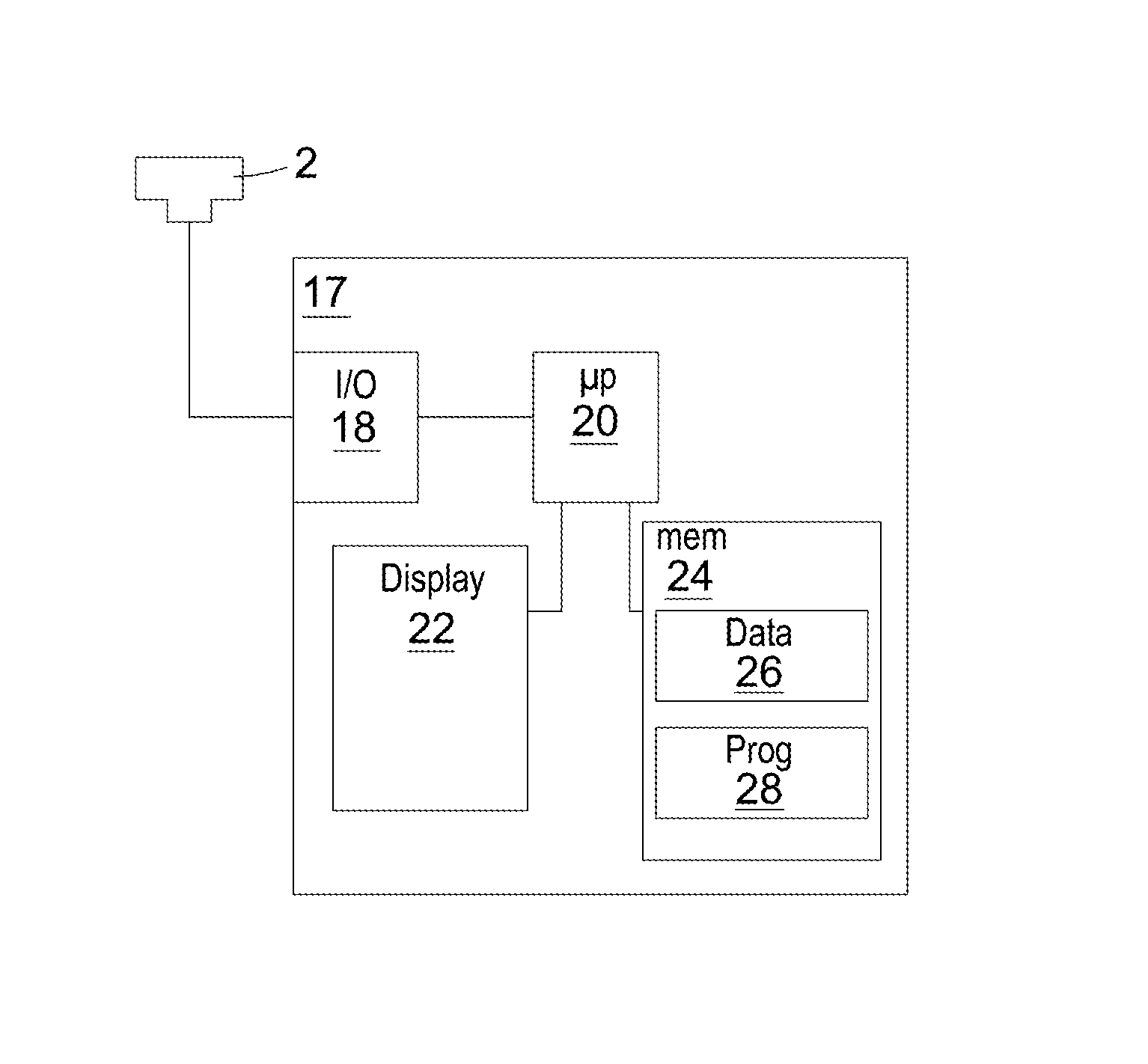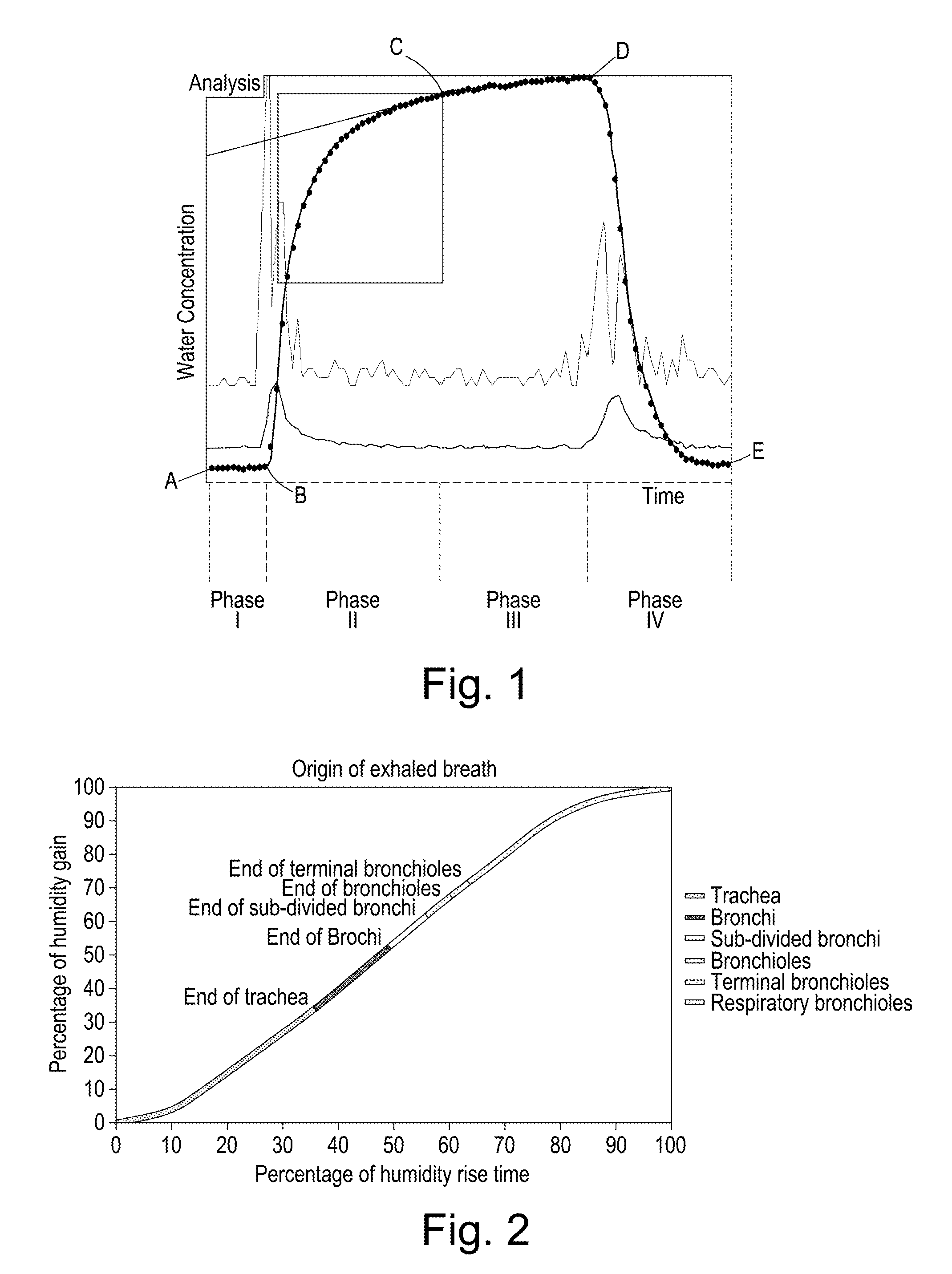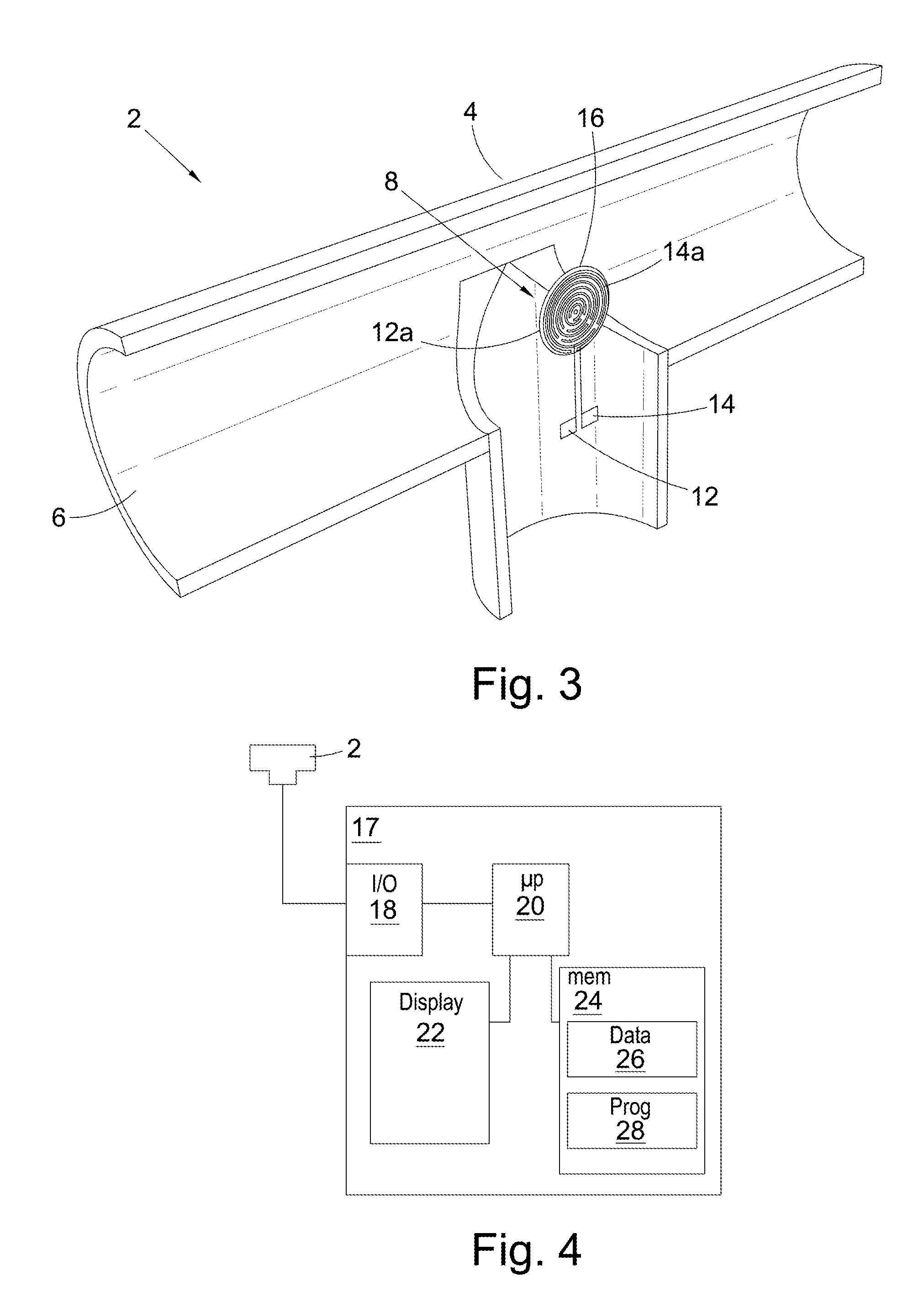Detection of respiratory system lesions
a technology for respiratory systems and lesions, applied in the field of lesions detection of respiratory systems, can solve the problems of ineffective early screening programmes, inefficient use of resources, and inability to meet demand
- Summary
- Abstract
- Description
- Claims
- Application Information
AI Technical Summary
Benefits of technology
Problems solved by technology
Method used
Image
Examples
example 1
[0061]Humidity profiles were obtained in trial conducted on subjects using an electrochemical sensor prepared as follows:
Sensor Construction
[0062]A sensor assembly having the general configuration shown in FIG. 3 was prepared. The electrodes were coated with an ion exchange layer comprising a commercially available sulphonated tetrafluoroethylene copolymer (Nafion®, ex Du Pont)
[0063]Using this type of sensor device to obtain humidity profiles of water vapour content versus time for exhaled breath a number of subjects were identified who gave profiles with an indent in the phase II initial upward curve portion. The health of these subjects was subsequently further investigated and the indents correlated with a lung lesion.
example 1a
[0064]A subject A known to be suffering from interstitial lung disease was caused to exhale into the sensor assembly. The change in the content of water vapour during the time of the exhalation was determined and the profile is shown in FIG. 7.
[0065]The profile follows the general pattern described above, that is having Phases I, II, III and IV bounded by points A, B, C, D and E, as described above and expected of a healthy subject. However, as can be seen from the figure, an irregularity can be identified in the profile in the region indicated as X, corresponding to the middle to later portion of Phase II of the profile. In particular, the profile indicates that the general increase in water vapour content over time during Phase II slowed at point Y. After point Y, the content of water vapour detected in the exhaled gas stream was less than expected. The expected increase in water vapour content, as determined by interpolation between the start and end points of Phase II, is shown ...
example 1b
[0067]Subject B, a male, 36 years of age, ex-smoker, was asked to exhale into the sensor assembly. The assembly determined the change in water vapour content over the time of exhalation. The profile thus generated is shown in FIG. 8.
[0068]As can be seen, by comparing the profile of FIG. 8 of Subject A with the profile of FIG. 1 of a healthy person, it can be noted that Phase II of the profile contains a deviation from the pattern expected of a healthy subject. In particular, it can be seen that the profile is not smooth and contains a discontinuity, such that the content of water vapour in the gas exhaled during the middle to later portion of Phase II was lower than expected. Subject A was subjected to further investigations.
[0069]Subject B complained of chest and back pains, was diagnosed as having dyspnea and a dry cough. Further examination of the subject revealed the right lung to be normal, but the left lung to be compressed at the upper lobe bronchus. A CT scan was conducted a...
PUM
 Login to View More
Login to View More Abstract
Description
Claims
Application Information
 Login to View More
Login to View More - R&D
- Intellectual Property
- Life Sciences
- Materials
- Tech Scout
- Unparalleled Data Quality
- Higher Quality Content
- 60% Fewer Hallucinations
Browse by: Latest US Patents, China's latest patents, Technical Efficacy Thesaurus, Application Domain, Technology Topic, Popular Technical Reports.
© 2025 PatSnap. All rights reserved.Legal|Privacy policy|Modern Slavery Act Transparency Statement|Sitemap|About US| Contact US: help@patsnap.com



